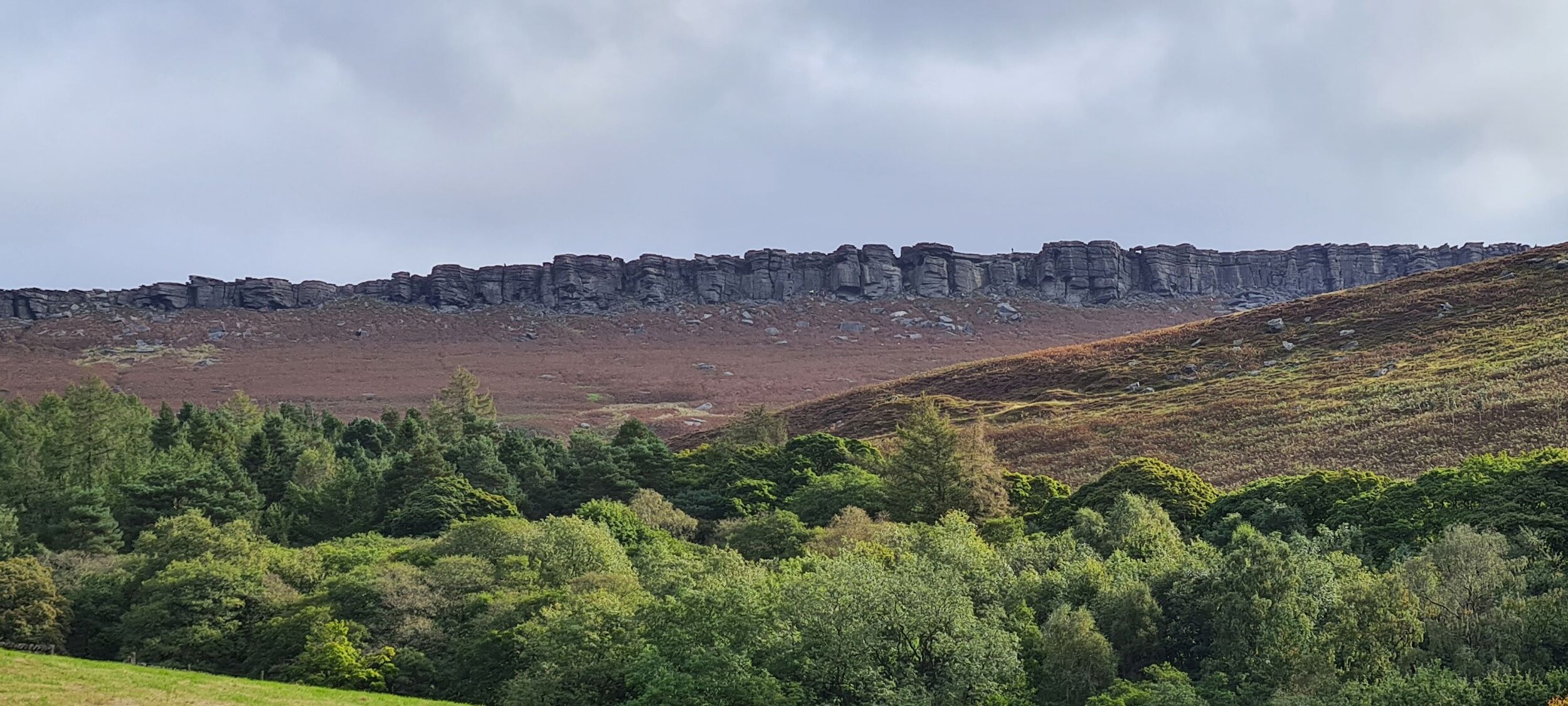Stanage Edge
One of top 10 adventures is Stanage Edge. Stunning views, popular for climbing and a great place for a Sunday afternoon relaxing walk.
Hathersage is a small village in Peak District with lovely boutique café, outdoor clothing and equipment stores like Outside, Alpkit. We have parked at Oddfellows Road Car Park in Hathersage, a pay and dislay car park where you can pay by card as well. There are no facilities but if you walk 5 minutes to the Main Road, there is a public toilet.
The route starts from Hathersage village, right after Alpkit store along Hood Brook river. Before we started to ascent to Stanage Edge I have spotted a lovely Bronte House on the left side of the road. The house looks very nice covered by plants, I think it’s owners are very lucky to be living in a beautiful home like this, close to nature.
The route is very popular and gets busy early in the morning, mostly with climbers. The rocky terrain is perfect for every weather and the ascent to the edge is just hard enough to give you a boost of energy.
Stanage Edge, or simply Stanage (from "stone edge") is a gritstone escarpment, it’s highest point is High Neb at 458 metres (1,503 ft) above sea level. On a clear summer day, the views from the edge are spectacular.
A paved packhorse road ran along the top of the edge, and remains of it can be seen, as can remains of the Long Causeway, once thought to be a Roman road which works its way over the edge on its route from Templeborough to Brough-on-Noe, crossing Hallam Moor and passing Stanedge Pole (note the slightly different spelling), an ancient waymarker on the route to Sheffield (source - Wikipedia).
At the top, there is a wide plateau and the wind is fairly strong compare to village. The views are breath taking and you can even see Sheffield on a clear day which is 10 miles away.
Quite unique and beautiful place to visit is Robin Hood’s Cave. There is a possibility to climb up to the cave itself but you need special climbing gear. You can walk through down the cliff and enjoy the spectacular views.
Another tourist attraction is Millstones Stanage Edge. Millstones have a long history spanning many thousands of years. Their current basic form can be dated to before the Norman Conquest (1066) as corn mills are recorded in Domesday Book of 1086. These millstones were used to grind grain like oats, barley and rye or other feedstuffs.
Grindstones were also produced in the Peak District. Mounted vertically on their edges they were used for crushing wood to create wood pulp to make paper.
The route is around 6 miles, moderate as difficulty and great for a walk on Sunday afternoon. There are few other routes longer than this, one of it starts from Redmires Reservoir. We will cover this route on other post so watch this space.












